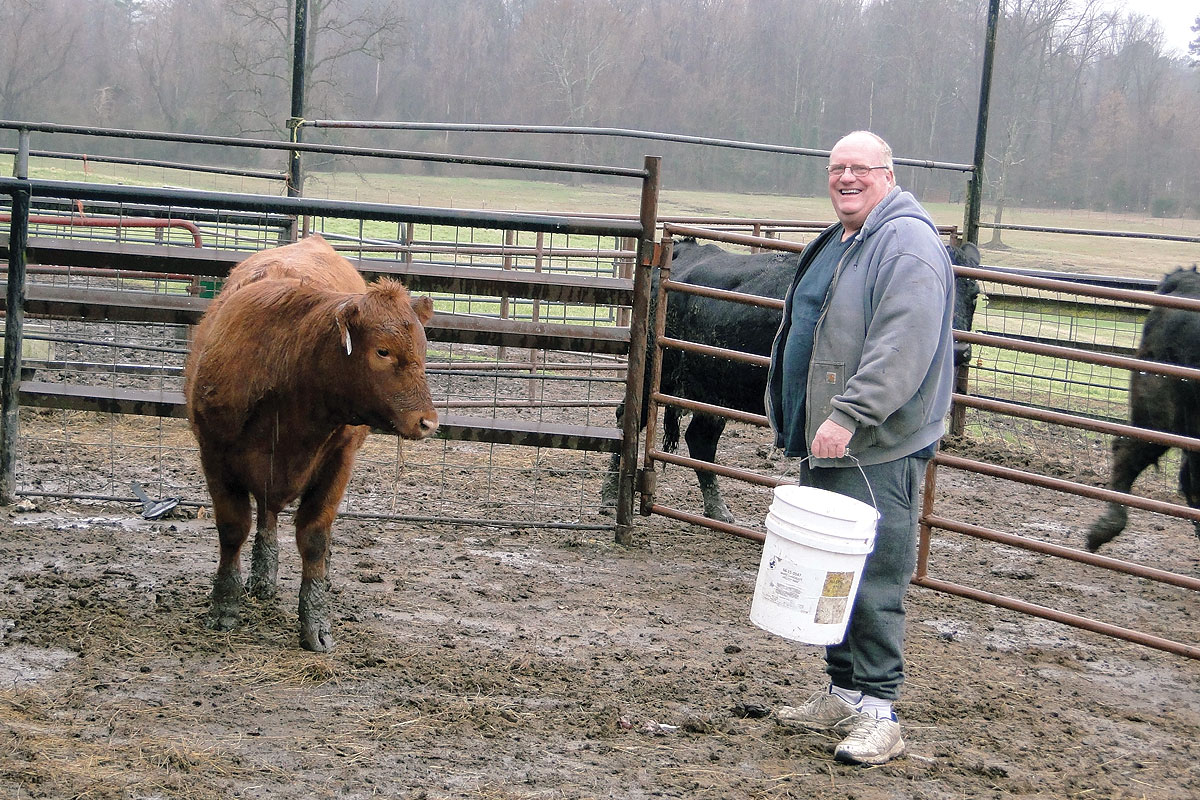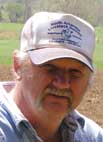
Steve and Natalie Mosher manage 50 head of cattle on 45 acres
Steve and Natalie Mosher of London, Ark., are working through empty nest syndrome because Colte, the youngest of their four sons, started college last fall.
A major part of the adjustment is no longer being actively involved in their children’s heavy showing schedule though perhaps grandchildren will one day follow in their fathers’ footsteps.
Both Steve and Natalie work full time off the farm. Steve is a community solution specialist for the USDA Rural Development Center. He works with rural communities, organizations and individual citizens to solve problems and to plan for the future. Natalie, on the other hand, is a mechanical/nuclear engineer at the nearby plant on the Arkansas River with the river also bordering part of their property.
The Mosher Limousin operation is a model of efficiency. They run an average of 50 animals, not including calves, on only 45 acres.
The couple bought their land from Lawrence Robert who would only sell to someone who would keep the land rather than reselling it for housing development. The land fit the Moshers perfectly because Steve had already purchased Limousins while attending the University of Arkansas, where the couple met.
The cattle came to Steve’s attention when his future father-in-law, Jerry Bolinger, had used two Limousin bulls with his 300-head commercial herd. Those bulls sired most of the calves and were easy to pick out because they were the last to be born but weighed 100 pounds more at weaning due to Limousin feed efficiency.
Jerry then switch to all Limousin cattle and let Steve purchase his first two heifer crops. Steve’s father Lynn let Steve keep the heifers on the family dairy farm as a lure to get Steve’s help with the constantly heavy dairy workload.
“I started working really young as a kid and saved money from raising pigs and cleaning out chicken houses, which allowed me to purchase the heifer crops,” Steve said.
By age 12, Steve learned how to AI from his father, who also gave Steve important advice: “It’s not how much money you make, it’s how much you retain.”
Lynn was not only referring to the higher cost of living in cities and towns, but also to efficiency in keeping overhead costs down. The biggest lesson Steve learned from raising pigs was minimizing feed costs through providing nutrition resourcefully, a resourcefulness he has applied to his cattle operation.
In terms of land usage and nutrition, Steve uses intensive cell grazing. Winter pasturing is supplemented by no till drilling of oats, wheat and vetch which mature at different times. Steve also has his hay analyzed. That free analysis provides information to John Knight at Livestock Nutrition Center to develop a custom ration to provide optimum nutrition for Steve’s herd.
Land care includes fertilizing in both spring and fall as a result of his combination of warm and cool season grasses. He also sprays for weeds in the spring but only after the clover has gone to seed.
“The biggest managerial challenge is conception because all of the mommas’ energy goes into raising a calf. Holstein-influenced cows supplied the milk needed for embryo transplant calves,” Steve said.
Steve’s herd consists of 15 dairy-influenced commercial females for embryo transplant and 30 registered Limousin females, which he AIs. He also has one registered cleanup bull. Steve recalls seeing the bull as a calf, but felt he couldn’t afford it at the time. He paid a much higher price later when that bull won reserve national champion at the National Western Livestock Show in Denver. The advantage to waiting is the higher value of calves from a cleanup bull that is a proven champion for those cows not bred by the superior genetics he uses for ET and AI.
Steve sells breeding bulls and show heifers. He chooses both spring and fall calving in order to be able to sell when his customers need stock. He sells by word-of-mouth and through his website, as well as through organizations such as the Arkansas Junior Cattlemen’s. Culled cattle are sold at 101 Livestock Auction in Blackwell, Ark.
The dominant motivation in everything Steve does is having a positive influence whenever and however he can whether that influence is through his job, his cattle or his personal life. Steve’s life and position as a community solution specialist provides important insights into rural life as well as help for the people he works with.
“Rural and farm people take time as a community and as individuals to mold children,” Steve said. “I grew up in the community with people who had confidence in me and taught me the value of passing their attitudes and skills to others down the road. Rural youth seem not as troubled.”
While much of Steve’s community help has been through his job, his youth assistance efforts have been varied. He coached baseball for 25 years, ran 4-H shooting sports for nine, and has been active in the Junior Cattlemen’s for 20 years.
One area that was directly applicable to farming was teaching livestock judging for 20 years. He taught young people how to select cattle with the potential for success, an interesting way to teach the difficult skill of critical thinking.
Steve already knows what he wants for an epitaph: “Here lies a man who did all he could to make a positive difference.”






